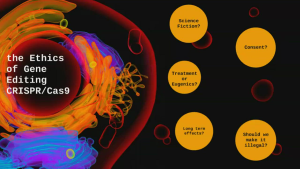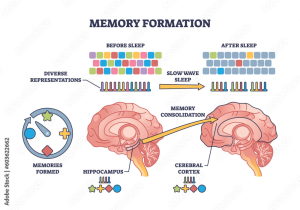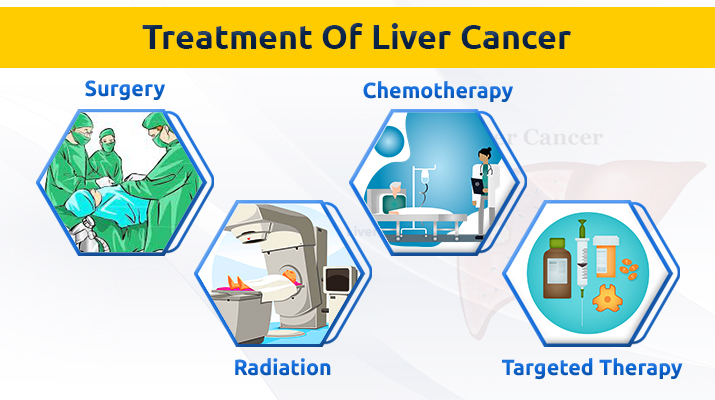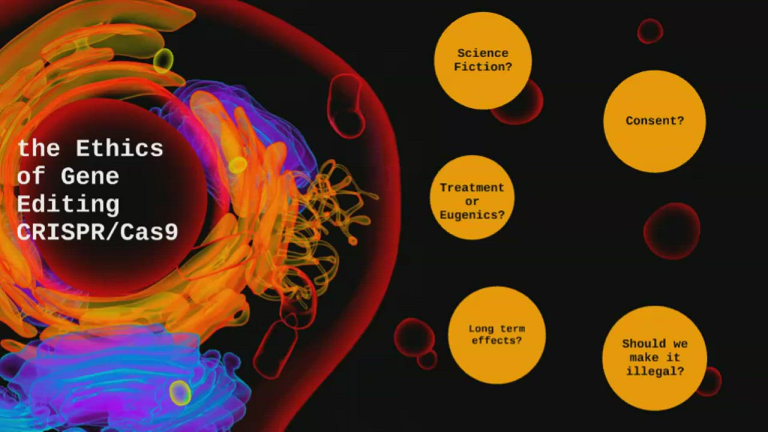Prion disease treatment has taken a hopeful turn with groundbreaking research that could pave the way for effective therapies against these fatal disorders. Prion diseases, like fatal familial insomnia and Creutzfeldt-Jakob disease, arise from misfolded proteins that wreak havoc on the brain. Recent studies conducted by researchers at the Broad Institute of MIT and Harvard demonstrate a promising gene-editing therapy, which could potentially lead to a prion disease cure through innovative modification of the prion protein gene. With each revelation, the research on prion diseases highlights the urgency of intervention strategies as scientists strive to translate these laboratory findings into clinical applications. A recent milestone even embodies a personal mission, as some researchers fight against the very illnesses they seek to treat, demonstrating an extraordinary blend of scientific rigor and deep emotional investment.
The development of therapies targeting prion-related illnesses signifies a pivotal moment in neurological research. These neurodegenerative conditions, often characterized by their swift progression and devastating outcomes, have long evaded effective interventions. Recent advancements hint at a transformative approach through gene-editing techniques aimed at rectifying the underlying genetic mutations responsible for these disorders. By delving into the complexities of prion protein behavior, scientists at Harvard and beyond are not only shedding light on the mechanics of diseases like fatal familial insomnia but also propelling the field toward potential breakthroughs. With innovative collaborations and continuous exploration, the future is bright for those seeking answers to these perplexing medical challenges.
Understanding Prion Diseases and Their Impact
Prion diseases are a group of neurodegenerative disorders characterized by the accumulation of misfolded proteins in the brain, leading to severe neurological decline and ultimately death. This includes conditions like Creutzfeldt-Jakob disease and fatal familial insomnia. These diseases not only devastate individual lives but also profoundly affect families, as many prion diseases are inherited, leading to familial suffering and uncertainty. As our understanding of these disorders deepens, so does the urgency to develop effective treatments that can offer hope to those affected.
Research into prion diseases reveals that approximately 15 percent of cases stem from inherited mutations, while the remaining 85 percent arise sporadically. This distinction is crucial as it influences the approach taken in research and potential treatment. Ongoing studies focus on the genetic underpinnings of these diseases and explore interventions that could slow or halt disease progression, thereby extending quality of life. In this context, the groundbreaking work being done at institutions like the Harvard Broad Institute signifies a beacon of hope for patients and their families.
Breakthroughs in Prion Disease Treatment
Recent advances in gene-editing therapy represent a significant milestone in prion disease treatment. Researchers at the Broad Institute have demonstrated that by modifying a single base in the gene associated with the production of harmful prion proteins, they can reduce levels of these proteins within the brains of mice. This innovative approach not only illustrates the potential for a prion disease cure but also raises hopes for human applications in the future. Effective treatment options are particularly important for inherited forms of these diseases like fatal familial insomnia.
Despite the promising results observed so far, the road to human trials remains lengthy. Researchers, including David Liu, emphasize caution and meticulousness in progressing from laboratory discoveries to real-world treatments. The implications of these studies could redefine prion disease management, demonstrating that genetic modifications have the potential to combat these fatal illnesses more effectively than previously thought. In this transformative era, the scientific community is optimistic yet aware of the multiple hurdles still to address.
The Personal Journey of Patient-Scientists
For many researchers involved in the study of prion diseases, including Sonia Vallabh and Eric Minikel, the work is more than just scientific inquiry; it is a deeply personal mission. Vallabh, who tested positive for fatal familial insomnia, draws motivation from her family’s battle with the disease, particularly after her mother succumbed to its effects. This personal connection drives her commitment to understanding and fighting to find prion disease treatment options that could save lives.
Patient-scientists like Vallabh actively bridge the gap between research and real-world impact, offering unique insights informed by their experiences. Their involvement not only enhances the research narrative but also amplifies the emotional investment of the entire team. As the investigation into effective therapies continues, the stories of these researchers illuminate the profound personal stakes involved, instilling a sense of urgency and empathy in the quest for solutions against prion diseases.
Collaboration and Innovation in Neuroscience
Collaboration stands as the backbone of groundbreaking research in neuroscience, particularly in the field of prion diseases. The partnership between Vallabh, Minikel, and David Liu exemplifies how interdisciplinary work can lead to significant advances in treatment options. Researchers are continuously expanding their efforts, sharing insights and expertise that transcend traditional boundaries. Liu’s laboratory, known for its pioneering work in gene editing, flourishes through its collaborations with experts in various fields, creating a robust framework for innovation.
Moreover, the collective efforts among research institutions, such as the Broad Institute and others, highlight the significance of shared goals in advancing medical science. Through joint funding and resource pooling, researchers are better equipped to tackle the complexities of prion diseases, leading to promising findings that hold the potential for clinical application. This spirit of collaboration fosters a conducive environment for innovative breakthroughs, turning theoretical discussions into viable therapeutic strategies.
The Future of Gene Editing Therapy
The future of gene editing therapy in treating prion diseases looks promising, particularly after the recent advancements made by scientists at Harvard. With the ability to significantly reduce prion protein levels through targeted genetic engineering, researchers are inching closer to creating therapies that could revolutionize care for patients suffering from these fatal conditions. As researchers refine their techniques and validate their approaches in preclinical models, the possibilities for an effective prion disease cure become increasingly tangible.
However, the transition from successful mouse models to human clinical trials introduces a new set of challenges. Research must navigate regulatory pathways while ensuring safety and efficacy across diverse human populations. Continued investment in such innovative therapies not only holds the promise of transformative treatments for prion diseases but also sets a precedent for addressing other genetic disorders in the future. The focus on gene editing therapy is a pivotal moment in the landscape of neurodegenerative disease treatment.
Safety Considerations in Prion Research
Safety remains a top priority in prion disease research, particularly as scientists manipulate genetic material that could have widespread implications. The nature of prion proteins—being both infectious and hazardous—demands stringent safety protocols. Research institutions are acutely aware of the risks involved following past incidents that have led to severe consequences, such as the accidental exposure in a laboratory that resulted in a researcher’s death.
By implementing comprehensive safety measures and adopting advanced methodologies, researchers can minimize risks while exploring innovative treatments for prion diseases. The continuous evolution of safety protocols will play a critical role in the progress of clinical trials, ensuring that advancements in treatment do not come at the cost of human health. Future research endeavours must maintain a balance between urgency and the necessary caution that the study of prion diseases demands.
Ethical Implications of Prion Disease Research
As advancements in prion disease research progress, ethical considerations must be at the forefront of scientific discourse. The manipulation of genetic material, particularly when it involves human subjects, brings about significant moral responsibilities. Researchers must navigate the complexities of consent, especially in families predisposed to hereditary prion conditions like fatal familial insomnia, and ensure that all trials maintain the highest ethical standards, protecting vulnerable participants.
Additionally, transparency in the research process is crucial to building trust among affected communities. Engaging with patients, their families, and advocacy groups not only fosters inclusivity but also aids in shaping research directions that align with the needs of those impacted by prion diseases. Upholding ethical practices will ensure that breakthroughs in treatment are not only scientifically sound but also socially responsible.
The Role of Genetics in Prion Disease Understanding
Genetic factors play a critical role in the manifestation of prion diseases. Research has identified specific mutations within the prion protein gene that predispose individuals to these fatal conditions. Understanding these genetic components is crucial for developing gene editing therapies aimed at stopping or reversing disease progression. Investigating the genetic basis of prion diseases provides insights that could lead to preventative strategies or targeted treatments that mitigate risk for those with inherited predispositions.
The application of gene editing technologies, particularly those developed by researchers at institutions like Harvard, underscores the potential for genetic interventions to act as a transformative approach in treating prion diseases. By focusing on the genetic aspects of these disorders, scientists can pave the way for more precise and effective therapeutic options, enhancing the quality of life for individuals affected by prion diseases and potentially opening avenues for future research into similar neurodegenerative conditions.
The Impact of Prion Disease Research on Public Health
Research on prion diseases has far-reaching implications for public health, influencing both clinical practice and health policy. As scientists uncover the mechanisms behind these rare yet devastating disorders, they not only aim to develop treatments but also enhance awareness and understanding within the medical community. This research informs guidelines for screening, early diagnosis, and management of patients at risk of prion diseases, enabling timely interventions that could alleviate suffering.
Moreover, increased visibility around prion diseases advocates for more substantial funding and resources dedicated to researching these conditions. As public interest grows with potential breakthroughs in treatments, health organizations are more likely to prioritize prion diseases within broader conversations about neurodegenerative disorders. The ultimate goal is to cultivate a healthcare environment where prion diseases are not only recognized but addressed through proactive measures and innovative therapies.
Frequently Asked Questions
What is the current status of prion disease treatment research?
Recent studies indicate significant advancements in prion disease treatment, particularly with new gene editing therapies. Researchers at the Broad Institute of MIT and Harvard have demonstrated that modifying genes can reduce harmful protein levels associated with prion diseases in laboratory mice, suggesting a promising pathway toward potential treatments for humans.
Can gene editing therapy cure prion diseases like fatal familial insomnia?
While gene editing therapy shows promise in reducing prion protein levels and extending lifespans in laboratory studies, it is important to note that a cure for prion diseases, such as fatal familial insomnia, has not yet been achieved. Ongoing research aims to translate these findings into effective human treatments.
How does gene editing therapy work in the context of prion diseases?
Gene editing therapy for prion diseases involves modifying specific genes responsible for producing misfolded proteins. By using techniques like base editing, researchers can alter the genetic instructions, leading to a reduction in the production of these harmful proteins, as demonstrated by recent studies published in Nature Medicine.
What challenges remain in developing a cure for prion diseases?
Despite promising advancements in prion disease treatment, significant challenges remain, including safety concerns and the need for extensive preclinical and clinical trials. Researchers must refine gene editing techniques, improve targeting methods, and ensure the safety and efficacy of treatments before they can proceed to human trials.
What role does personal motivation play in prion disease treatment research?
Personal motivation has been a driving force in prion disease treatment research, especially for patient-scientists like Sonia Vallabh and Eric Minikel, who are directly affected by prion diseases. Their firsthand experience with fatal familial insomnia fuels their commitment to advancing research and developing effective treatments.
Are there any clinical trials currently underway for prion disease treatments?
As of now, while there have been significant laboratory breakthroughs, clinical trials for prion disease treatments are still in the planning stages. Researchers are working toward refining gene editing techniques before embarking on human trials, which could take several years to materialize.
What impact has Harvard’s research on prion diseases had on the scientific community?
Harvard’s research on prion disease treatment has garnered attention for its innovative use of gene editing therapies, advancing the understanding of these fatal disorders. This groundbreaking work highlights the collaborative spirit within the scientific community and raises hope for future therapeutic options for affected individuals.
| Key Point | Details |
|---|---|
| Prion Disease Overview | A group of fatal disorders caused by misfolded proteins in the brain, including conditions like Creutzfeldt-Jakob disease and fatal familial insomnia. |
| Recent Research Findings | Gene-editing therapy shown to reduce harmful protein levels in mice by 50%, extending lifespan by 52%. Published in Nature Medicine. |
| Research Team | Led by Sonia Vallabh and Eric Minikel, incorporating their personal experiences with prion disease. |
| Future Trials | Human trials still a long way off; caution is needed due to potential risks involved in prion research. |
| Collaboration | The integration of patient-scientists fosters motivation and innovation in research. |
| Challenges Ahead | Ongoing need for safer and more effective techniques before transitioning findings to human applications. |
Summary
Prion disease treatment is experiencing significant advancements, particularly with the promising results of gene-editing therapies. The research associated with Sonia Vallabh and Eric Minikel has provided a beacon of hope, showing that modifying genetic factors may indeed cut down on the levels of toxic proteins in the brain. While challenges remain on the journey towards human trials, the collaboration between researchers and patient-scientists brings a unique drive to tackle this devastating group of diseases. As progress continues, the treatment for prion disease could become a reality, transforming the lives of those affected.









